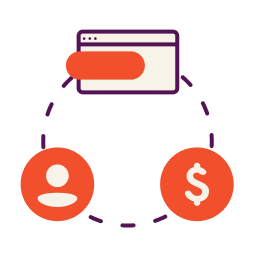The average FICO score in the U.S. has just topped 700 for the first time since the credit scoring giant began tracking the data, continuing an upward trend in personal credit scores since the Great Recession.
Based on data from April of this year, FICO found the average FICO score in the U.S. was 700, which is the highest that score has ever gone. Driving the trend is lower overall delinquencies on consumer credit reports, a rise in superprime consumers and a drop in subprime borrowers. A FICO score of 700 is generally considered a good personal credit score.
The FICO Score used for the study is measured on a 300-850 scale, which is common among not just FICO scores, but other consumer credit scores as well. (There are some notable exceptions — FICO’s most popular business credit score model has a different range. The FICO SBSS, which is most commonly used to qualify businesses for SBA loans, goes from 0-300.) And the 700 mark is a major milestone for many Americans working on improving their credit — it can mean the difference between getting approved for a loan or getting a better interest rate on a financial product. For business owners, a personal credit score is sometimes used in addition to a business credit score in order to qualify you for a business loan or another kind of financing option, so maintaining good business credit and personal credit can keep more options open for you. (You can check your personal and business credit scores for free on Nav.)
If you’re sitting back and wondering why your credit score is below the new national average, here are some of the credit scoring factors that could be holding you back.
1. Spotty Payment History
FICO found that a major driver behind busting through that 700 ceiling has been a decline in recent, seriously delinquent accounts. Only 16.5% of scoreable Americans had an account with a 90+ days past-due mark in the past 2 years with the most recent data. Just three years ago, that number was at 19.4%. Since payment history is the most important scoring factor in most credit scoring models, having a recent late payment on your credit report can seriously impact your scores. The negative impact of a late payment lessens over time, but it will take years to age off your credit report.
2. High Balances
The second most important factor impacting your credit scores is a ratio called your debt usage or “utilization”. This is the balance on your revolving credit accounts, like credit cards and lines of credit, in relation to the limits. Luckily, having a high balance one month doesn’t mean you’ve hurt your score forever. Your debt utilization changes every month and lowering it can have a significant impact on your scores quickly. (You can check out this example from a Nav user who lowered his utilization and saw his credit score increase significantly in just a month.)
3. Lots of Credit Applications
Another major factor cited by FICO as to why Americans have finally hit the elusive 700 mark is that we’re getting better about limiting our applications for new credit. Inquiries, or applications for new credit, are not as large of a factor in most credit scoring models compared to payment history and debt utilization, but they still have an impact. The FICO Score used in the study correlates increased applications for credit with increased risk, meaning you may see a small credit score dip when you apply for a loan, credit limit increase or another financing option. Consumers with one or more hard inquiries on their credit reports dropped to a three-year low in April, which had a small, but not insignificant impact in raising that average national score to 700.
If you have a lot of inquiries on your credit reports over the past 12 months, that could be having a major impact on your score. And there’s a difference between hard and soft inquires. Most credit reports will include hard inquiries for 2 years, and most scoring models will factor them into your scores for the first 12 months after they’re made. However, the impact is generally small and its impact lessens over the course of that first year.
This article was originally written on July 19, 2017 and updated on January 20, 2021.



Have at it! We'd love to hear from you and encourage a lively discussion among our users. Please help us keep our site clean and protect yourself. Refrain from posting overtly promotional content, and avoid disclosing personal information such as bank account or phone numbers.
Reviews Disclosure: The responses below are not provided or commissioned by the credit card, financing and service companies that appear on this site. Responses have not been reviewed, approved or otherwise endorsed by the credit card, financing and service companies and it is not their responsibility to ensure all posts and/or questions are answered.